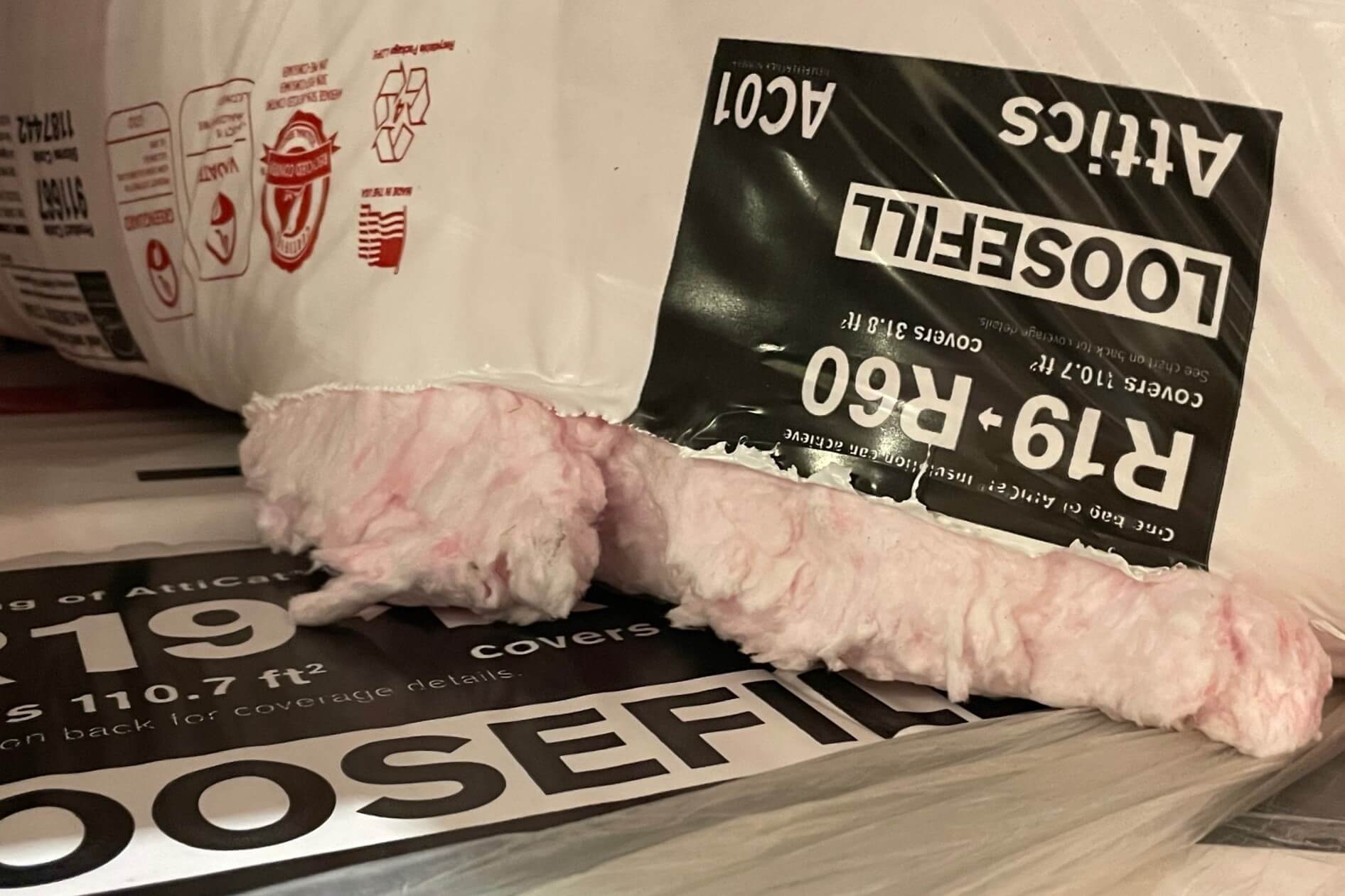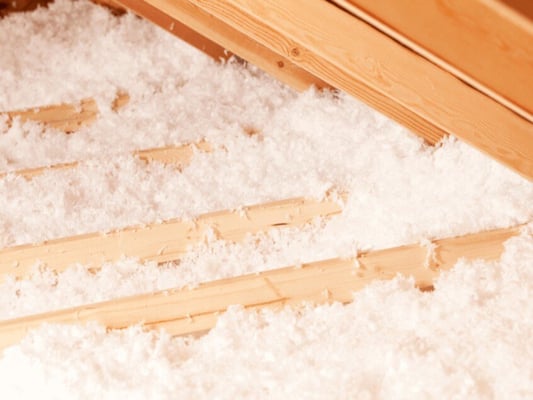Pros And Cons Of Blown-In Fiberglass
November 3rd, 2023
4 min read

As you evaluated different insulation options, you came across blown-in fiberglass. You’re curious whether this product is affordable and if it would work well for the project you have in mind. Blown-in fiberglass is a fiberglass variation most commonly used in attics. Is this the solution you need to lower your energy bills?
South Central Services is a spray foam insulation company, but it’s our responsibility to know about all insulation products. This knowledge allows us to offer customers an honest look at their options. In most cases, spray foam insulation offers the best performance. While blown-in fiberglass has lower performance than spray foam, it can be used well in some applications.
By the end of this article, you will know the benefits and drawbacks of using blown-in fiberglass, and you’ll better understand whether this is the product you need.
Don't have time to read right now? Check out everything you need to know at a glance.
Pros Of Blown-In Fiberglass Insulation
What are some reasons to choose blown-in fiberglass insulation? Three key areas make blown-in fiberglass a popular choice.
- Lower cost
- DIY capability
- Better than batt
Let's examine each of these in more detail.
1. Blown-In Fiberglass Is A Lower Cost Option
In terms of materials, blown-in fiberglass insulation is one of the more budget-friendly insulation options available. The price per square foot ranges between $2.50 and $5.00 per square foot for raw materials. Of course, the cost varies based on the necessary R-value for a project. The higher the required R-value, the greater the amount of raw materials needed.
The material cost from a hardware store would be approximately $2.50 to $4.00 per square foot at an R-value of R-49. However, even at $4 per square foot, blown-in fiberglass is still more affordable than spray foam.
2. Blown-In Fiberglass Has Few Installation Requirements
You can hire a professional to install blown-in fiberglass, but you can also install it yourself. If you opt for a DIY approach, you must rent a blower machine from a store like Home Depot or Lowe’s. While this is an additional cost, you may save money by not hiring a professional.
We recommend checking for machine rentals first because home improvement chains only have these machines available in some locations. Don’t buy bags of loose-fill fiberglass before checking rental availability. A machine may not be available or may only be available to rent with a different brand of fiberglass than the one you bought.
3. Blown-In Fiberglass Offers Better Performance Than Batt
Blown-in fiberglass insulation improves on fiberglass batt performance. Between these two fiberglass options, blown-in insulates better. While batt insulation is less expensive, it is also prone to gaps and sagging. Batt insulation cannot get into every corner and crevice of a space.
Blown-in fiberglass, however, can fill and contour to unique spaces. This complete coverage prevents gapping and boosts its performance compared to batts.

Many homeowners who are price-conscious will choose blown-in fiberglass over its batt version to increase energy efficiency. Both products are considered budget-friendly.
Cons Of Blown-In Fiberglass Insulation
Blown-in fiberglass is moderately inexpensive and can be installed by an interested and capable homeowner. However, some problems can arise from using blown-in fiberglass. You should know the five major drawbacks of using blown-in fiberglass insulation.
- Personal responsibility
- Time-consuming installation
- Not the most effective
- Requires maintenance
- Limited applications
Let's examine each of these cons in more detail.
1. DIY Blown-In Insulation Means Personal Responsibility
If you choose the DIY route for blown-in fiberglass, be prepared to do some math. Making sure your blown-in insulation is effective requires calculating the necessary R-value. R-value requirements vary by climate zone and the area of the building you’re insulating. The higher the R-value, the more product you will need to buy and the more expensive your project will become.
I write about insulation for a living, and I don’t even want to think about calculating the necessary R-value to insulate my attic. If the idea of calculations for your DIY is overwhelming, you may not want to rent the blower and install it yourself.
Personal responsibility also extends to acquiring and wearing the appropriate personal protective equipment (PPE) to keep yourself safe during installation.
2. DIY Blown-In Insulation Is Time Consuming to Install
If you still want blown-in insulation for your attic, you could hire a professional contractor to install the insulation. Professionals have access to expensive equipment that more efficiently blows insulation. When we remove blown-in insulation from attics before replacing it, our customers often mention the time-consuming process of installing the blown-in insulation themselves.

What professional equipment can accomplish in an hour due to its scale, a homeowner’s rented blower machine can take six times as long to complete.
3. Blown-In Fiberglass Is Less Effective Than Other Insulations
While blown-in fiberglass offers better performance than batt insulation, it still can’t compete with insulations like blown-in cellulose and spray foam.
The reason for this performance deficit is the lightweight nature of blown-in fiberglass. The loose-fill style of the product makes it fluffy, and it doesn’t have the weightiness necessary to offer more performance. You may want to consider cellulose if you want a blown-in product and the best performance.
4. Blown-In Products Require Maintenance
Blown-in fiberglass settles over time. As the blown-in fiberglass settles, its R-value decreases. The insulation is no longer effective once the R-value dips below where it should be. Over about fifteen to twenty years, the settling will impact the R-value of the insulation.
If you choose this option, you must be prepared to rent a blower machine periodically to top off your insulation. You may get away with renting a machine, buying a few bags of loose-fill fiberglass, and topping off what’s there. However, if you want to be sure that your R-value is where it needs to be, you’ll need to do math again.
5. Blown-in Fiberglass Has Limited Applications
Blown-in fiberglass is generally limited to attic applications. It can be blown into wall cavities, but professionals usually complete that type of installation due to the scale and necessary equipment. Since blown-in fiberglass will settle within the first fifteen years after its installation, putting it in an enclosed location like a wall is not always recommended.
Below-grade applications like crawl spaces and basements are out of the question for blown-in fiberglass. Blown-in fiberglass is not approved for below-grade use and could grow mold if exposed to excess humidity. If you plan to insulate an area below the ground and prone to moisture, you should look at closed cell spray foam.
The Bottom Line About Blown-In Fiberglass Insulation
Blown-in fiberglass is a budget insulation product. Compared to fiberglass batts, it offers better performance for a potentially higher cost. If you’re looking to insulate your attic, blown-in fiberglass is worth researching. However, blown-in fiberglass is not the insulation you want for any other application, especially as a DIY project.
Now that you know the benefits and drawbacks of blown-in fiberglass, your next step is to:
- Compare blown-in fiberglass with fiberglass batt insulation
- Estimate the cost of blown-in insulation for your attic
- Determine the best insulation for your attic
Disclaimer: While we strive to publish information accurate to building science, local building codes and standards supersede our recommendations.
Alexis has been fascinated by spray foam insulation since 2018. When she isn’t thinking about insulation, Alexis is geeking out over storytelling and spreadsheets.
Topics:


